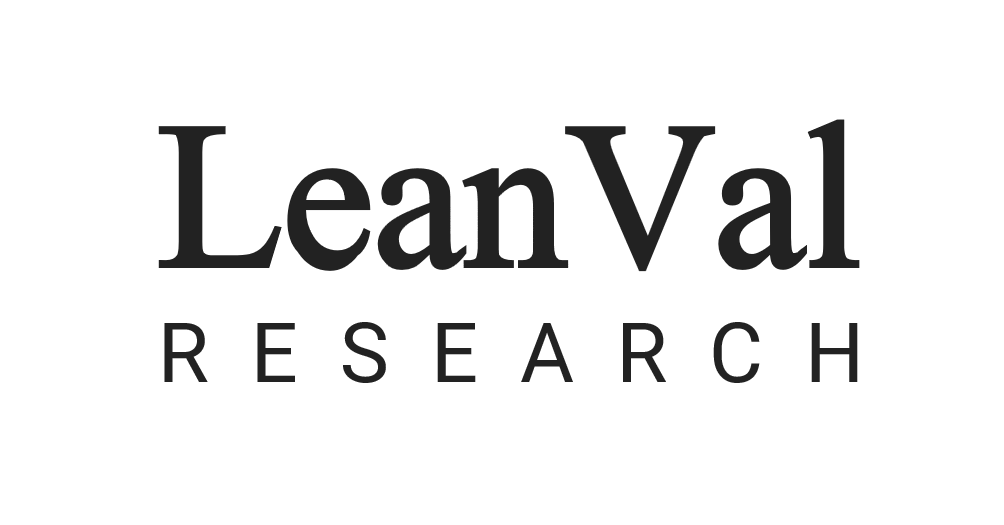ESG Data Definitions
The ESG Risk Ratings uses a rule-based methodology to measure a company’s unmanaged ESG risks driven by its exposure and management of material ESG issues. To help investors interpret a company’s rating, we created five risk categories that indicate the level of ESG risk to a company’s enterprise value. To learn more about the ESG Risk Ratings methodology visit www.sustainalytics.com/esg-ratings/
Sustainalytics product involvement datapoints identify the nature and extent of a company’s involvement in a range of product and business activities for screening purposes. This binary datapoint (yes or no) indicates whether the revenue coming from a specific product involvement area meets or exceeds the minimum revenue threshold level specified by Sustainalytics.
Datapoint Definitions
The Sustainalytics company-level ESG Risk Score measures the degree to which a company’ s economic value may be at risk driven by materially relevant ESG factors. The ESG Risk Score is based on a two-dimensional materiality framework that measures a company’s exposure to subindustry-specific material risks and how well a company is managing those risks. ESG Risk Scores are categorized across five risk levels: negligible, low, medium, high and severe. The scale is from 0–100, with 100 being the most severe.
The text descriptor that categorizes a company’s overall ESG Risk Score assigned by Sustainalytics. A company’s ESG Risk Score is assigned to one of five ESG Risk categories: 0–10 is Negligible, 10–20 is Low, 20–30 is Medium, 30–40 is High, 40–100 is Severe. Note: Because ESG risks materialize
at an unknown time in the future and depend on a variety of unpredictable conditions, no predictions on financial or share price impacts, or on the time horizon of such impacts, are intended or implied by these risk categories.
Sustainalytics provides an assessment of controversies using news screens of over 60,000 sources. A news report of an issuer’s alleged or actual misconduct is assessed to determine stakeholder impact and reputation risk within 48 hours of the event. Sustainalytics evaluates 10 different topic areas on a rating scale from 0–5 where 5 is the most severe.
The topics that pertain to the Highest Controversy Level are provided. The topics include: Business ethics, society and community, environmental operations, environmental supply chain, product and service, employee, social supply chain, customer, governance, and public policy.
An issuer’s Highest Controversy Level is translated into a description as follows: 0 None, 1 Negligible, 2 Low, 3 Significant, 4 High, 5 Severe.
This data point measures the degree to which a company is exposed to risk driven by environment, social or governance issues. The methodology was developed by Sustainalytics in the Fall of 2018 and captures the total exposure of a company’s economic value to ESG risk. This ESG risk is then broken down into various parts: unmanageable, manageable, managed and unmanaged. The unmanaged portion is the Sustainalytics ESG Risk Rating.
Under Sustainalytics methodology, at the company level, this data point represents the portion of ESG risk that a company manages through its policies, programs, management systems etc. The remainder of the manageable risk is called Management gap.
Name of the top 3 material ESG issues considered by an analyst to be high priority and has a company-specific, analyst written analysis in the ESG Risk Rating report.
Company Environmental Risk Scores from Sustainalytics measure the degree to which a company’s economic value may be at risk driven by environmental factors. The environmental risk represents the unmanaged environmental risk exposure after taking into account a company’s managment of such risks. The Environmental Risk Scores are displayed as a number between 0 and 100, though most scores range between 0 and 25.
Company Social Risk Scores from Sustainalytics measure the degree to which a company’s economic value may be at risk driven by social factors. The social risk represents the unmanaged social risk exposure after taking into account a company’s management of such risks. The Social Risk Scores are displayed as a number between 0 and 100, though most scores range between 0 and 25.
Company Governance Risk Scores from Sustainalytics measure the degree to which a company’s economic value may be at risk driven by governance factors. The governance risk represents the unmanaged governance risk exposure after taking into account a company’s management of such risks. The Governance Risk Scores are displayed as a number between 0 and 100, though most scores range between 0 and 25.
Product Involvement Datapoint Definitions
Direct Involvement: The company is involved in the production of adult entertainment and/or owns/operates adult entertainment establishments, including adult entertainment movies and television programs, magazines, and adult websites.
Indirect Involvement: The company is involved in the distribution of adult entertainment materials.
Minimum Revenue Threshold:
50–100 %
The category consists of abortion, contraceptives, and Human Embryonic Stem Cell and Fetal Tissue.
Direct Involvement: The company manufactures drugs that have abortifacient properties.
Indirect Involvement: The company owns and/or operates one or more acute care hospitals or surgical centers related to abortion or contraceptive surgical procedures.
Direct Involvement: The company manufactures contraceptives.
Direct Involvement: The company is involved in the use of human embryonic stem cells, fetal cell lines for vaccines or biological development.
Indirect Involvement: The company develops technologies that enable human embryonic stem cell research
Minimum Revenue Threshold:
Binary—yes/no
Direct Involvement: The company manufactures alcoholic beverages.
Indirect Involvement: The company is a supplier of alcohol-related products/services to alcoholic beverage manufacturers, including specialized
equipment or raw materials to produce alcohol.
Indirect Involvement: The company derives more than 10% of its revenues from the distribution and/or retail sale of alcoholic beverages.
Minimum Revenue Threshold:
Manufacturing: 5–9.9%
Supplier: 50–100%
Revenues: 25–49.9%
Direct Involvement: The company conducts animal testing for pharmaceutical products, medical devices, biotechnology, or nonpharmaceutical products.
Minimum Revenue Threshold:
Binary—yes/no
Direct Involvement: The company is involved in oil and gas exploration in Arctic regions.
Minimum Revenue Threshold:
0–4.9%
Direct Involvement: The company is involved in the development and/or cultivation of medical cannabis.
Direct Involvement: The company is involved in the development and/or cultivation of cannabis for recreational purposes.
Indirect Involvement: The company derives revenues from the distribution and/or retail sale of cannabis for recreational purposes.
Indirect Involvement: The company derives revenues from the distribution and/or retail sale of medical cannabis.
Minimum Revenue Threshold:
Production (for both Medical and Recreational): 0–4.9%
Retail (for both Medical and Recreational): 10–24.9%
Controversial weapons consist of antipersonnel mines, biological and chemical weapons, cluster weapons, depleted uranium ammunition, nuclear weapons, and white phosphorus weapons.
Direct Involvement: The company is involved in core weapon system, or components/services of the core weapon system that are considered tailor-made and essential for the lethal use of the weapon.
Indirect Involvement: The company provides components/services for the core weapon system, which are either not considered tailormade or not essential to the lethal use of the weapon.
Minimum Revenue Threshold:
Binary—yes/no
Direct Involvement: The company manufactures products made from fur or specialty leather, including products made from animals solely hunted or bred for their skin and fur.
Indirect Involvement: The company derives 10% or more of its revenue from the distribution and/or retail sale of products made from fur or specialty leather.
Minimum Revenue Threshold:
Production: 50–100%
Revenues: 25–49.9%
Direct Involvement: The company owns and/or operates a gambling establishment, such as a casino, racetrack, or online gambling.
Direct Involvement: The company manufactures specialized equipment used exclusively for gambling, including slot machines, roulette wheels, and lottery terminals.
Indirect Involvement: The company provides supporting products/services to gambling operations, such as gambling technology or credit lines to casinos.
Minimum Revenue Threshold:
5–9.9 %
Direct Involvement: The company grows genetically modified crops.
Indirect Involvement: The company is involved in the development and/or cultivation of genetically modified seeds and/or plants.
Minimum Revenue Threshold:
Growth: 0.1–4.9%
Development: 5–9.9%
Military contracting includes companies involved in contracts related to military weapons, weapon systems, secondary components of weapons, or weapon related services.
Direct Involvement: The company manufactures military weapon systems and/or integral, tailor-made components of these weapons.
Minimum Revenue Threshold:
Manufacturing and related weapons: 5–9.9 %
Non-weapons: 25–49.9 %
Direct Involvement: The company produces nuclear power, including utilities that own or operate nuclear power generators.
Indirect Involvement: The company provides products/services that support the nuclear power industry, such as designing and constructing nuclear power plants, manufacturing specialized parts for use in nuclear power plants, or companies involved in uranium mining exploration.
Indirect Involvement: The company distributes electricity generated from nuclear power.
Minimum Revenue Threshold:
Production: 5–9.9 %
Distribution and supporting products and services: 10–24.9 %
Direct Involvement: The company is involved in oil and gas exploration, production, refining, transportation and/or storage.
Indirect Involvement: The company provides tailor-made products and services that support oil and gas exploration, production, refining, transportation and storage.
Indirect Involvement: The company generates electricity from oil and/or gas.
Minimum Revenue Threshold:
Production: 0–4.9 %
Supporting Products/Services and Generation: 10–24.9 %
Direct Involvement: The company extracts oil sands.
Minimum Revenue Threshold:
0–4.9 %
Direct Involvement: The company is involved in the production and/or distribution of palm oil.
Minimum Revenue Threshold:
5–9.9 %
Direct Involvement: The company manufactures pesticides, including herbicides, fungicides, or insecticides.
Indirect Involvement: The company derives 10% or more of its revenues from the distribution and/or retail sale of pesticides.
Minimum Revenue Threshold:
Production: 5–9.9 %
Revenues: 50–100 %
Level of Involvement tracked by Sustainalytics in terms of percentage of annual revenues. The company provides pork-related products/services.
Minimum Revenue Threshold:
Binary—yes/ no
Direct Involvement: The company is involved predatory lending activities.
Minimum Revenue Threshold:
0–4.9 %
Direct Involvement: The company manufactures protection equipment and riot control weapons.
Direct Involvement: The company manufactures riot control weapons.
Direct Involvement: The company manufactures protection equipment.
Minimum Revenue Threshold:
Binary—yes/no
Direct Involvement: The company is involved in shale energy exploration and/or production.
Minimum Revenue Threshold:
0–4.9 %
Direct Involvement: The company manufactures and sells small arms to civilian customers or military/law enforcement.
Direct Involvement: The company manufactures and sells key components of small arms.
Indirect Involvement: The company is involved in retail and/or distribution of small arms and/or key components
Minimum Revenue Threshold:
Manufacturing: 0.1–4.9 %
Retail: 5–9.9 %
Thermal coal tracks the percentage of a company’s generating capacity based on coal instead of revenue.
Direct Involvement: The company extracts thermal coal for coal mining and exploration.
Indirect Involvement: The company generates electricity from thermal coal, including utilities that own or operate coalfired power plants.
Minimum Revenue Threshold:
0.1–4.9 %
Direct Involvement: The company manufactures tobacco products, including cigarettes, cigars, tobacco for pipes and snuff, and smokeless
tobacco products.
Indirect Involvement: The company supplies tobacco-related products/services, such as pipes or rolling papers.
Indirect Involvement: The company derives 10% or more of its revenues from the distribution and/or retail sales of tobacco products/services.
Minimum Revenue Threshold:
Manufacturing: 0.1–4.9 %
Related and Revenues: 10–24.9 %
Direct Involvement: The company processes whale meat.
Minimum Revenue Threshold:
Production: 0–4.9 %

